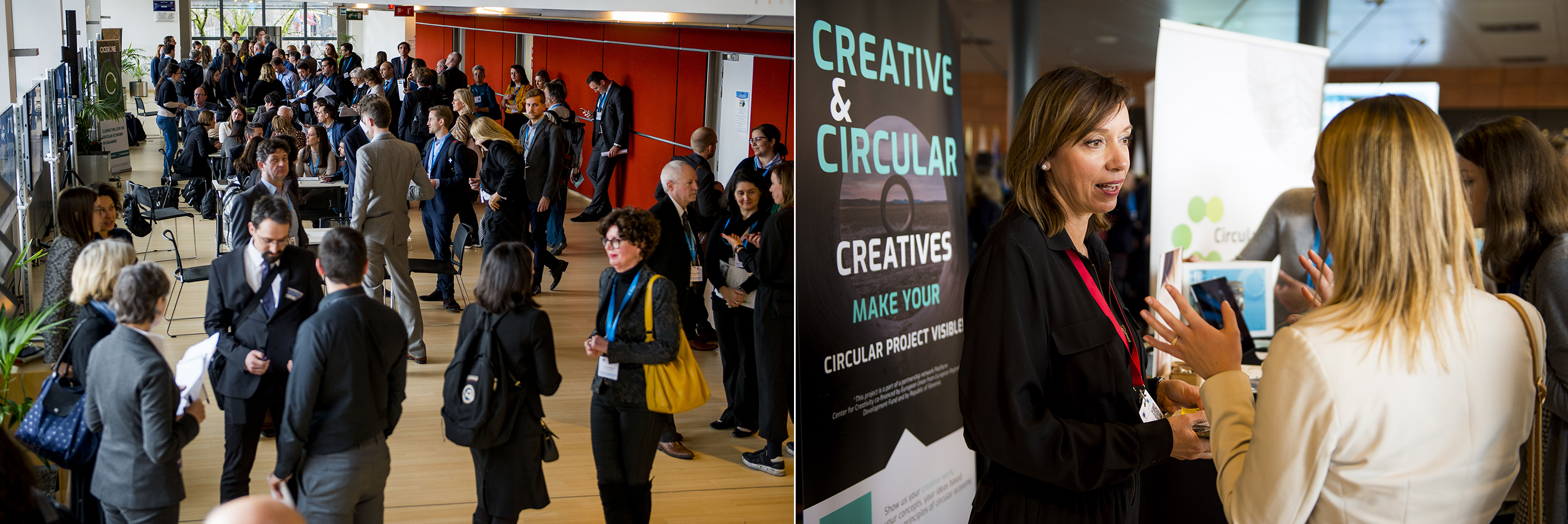About the Platform
An EU-wide interactive project steered in partnership with European civil society
A joint initiative by the European Commission and the European Economic and Social Committee, the European Circular Economy Stakeholder Platform brings together stakeholders active in the broad field of the circular economy in Europe.

Networking and showcasing during the annual conference, March 2019
A network of networks...
As a "network of networks", ECESP goes beyond purely sectorial activities to highlight cross-sector opportunities. It provides a meeting place where stakeholders can share and scale up effective solutions and address specific challenges. The Platform bridges local, regional and national level initiatives, and supports the implementation of the circular economy.
… to make the circular economy a reality by:
- driving the circular economy in the Member States, in regional and local governments, and among civil society organisations and businesses
- strengthening cooperation among stakeholder networks to facilitate the exchange of expertise, good practices, knowledge and lessons learnt in the circular economy
- identifying social, economic and cultural barriers to the transition to a circular economy with the intention of informing policy at all levels of governance.
How is the ECESP organised?
Policy decisions are taken by the Steering Group. This is made up of European Commission and EESC representatives and the ECESP co-chairs.
The Coordination Group is more the practical arm. Composed of a broad spectrum of organisations with a pan-European reach, the Coordination Group enables and implements change through its work plan of activities, showing how synergies can accelerate the transition. Their role includes acting as ambassadors for the Platform and the circular economy transformation; actively promoting interaction on the Platform between stakeholders. They promote and facilitate the exchange and mapping of good practices and foster European debate among all relevant circular economy-related stakeholders. The current mandate runs until autumn 2025.
The website
The website is an open resource: stakeholders can consult it and contribute content. There are eleven categories of items: Events, Good Practices (mostly businesses), Strategies (published by governments), Knowledge (reports, studies, etc.), Commitments (by companies), Pledges (relating to the European Strategy for Plastics in the Circular Economy), Financing (information on financing mechanisms), Education and training (details of circular courses), Measuring the circular economy, Toolkits and Guidelines, and Circular Economy Networks and Platforms.
Do have a look to see what’s on the website and tell us about your own initiatives!
How to get involved
- See what's available on the website and propose new content. The ECESP promotes website content via social media, particularly LinkedIn.
- You can participate in leadership group meetings (to join a group, let the secretariat know and we'll contact the leadership group leader; they will then get in contact with you). There are eight leadership groups. They are made up of a few Coordination Group members and external people/associations, on specific issues such as textiles or consumer behaviour. They hold meetings and organise EU Circular Talk events (webinars focusing on a certain topic, taking place roughly monthly). People interested in getting involved can take place in these EUCTs.
- You can take part in the annual conference, happening each Spring, as a participant or possibly as a speaker.
- You can apply to be a Coordination Group member.
- You can contact the Coordination Group members: see which member is interested in the same field, contact them and ask about synergies.
And of course, the Secretariat is always happy to answer your questions or requests.

